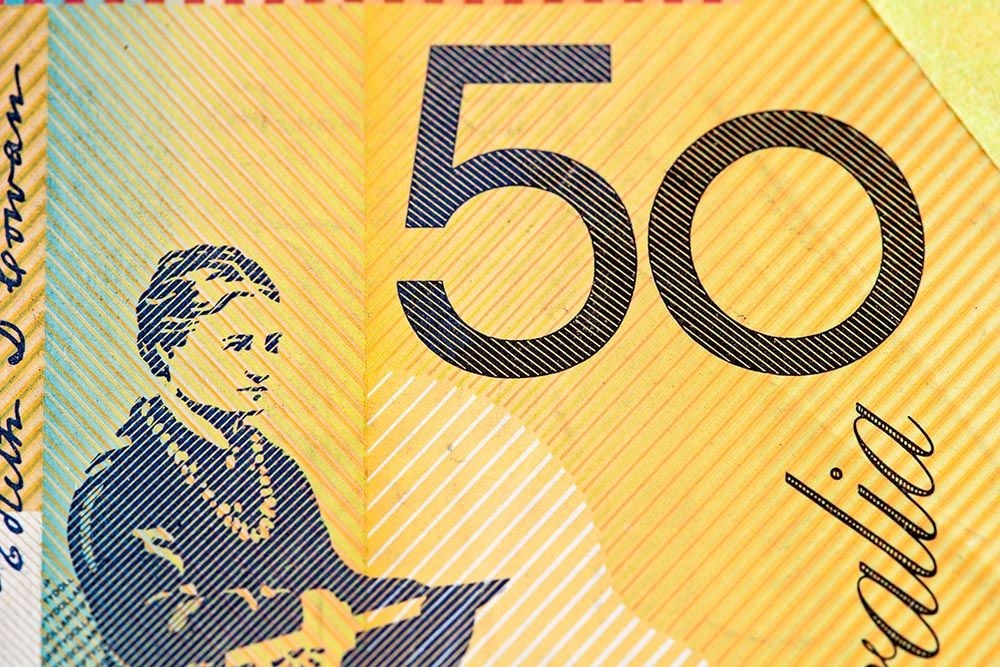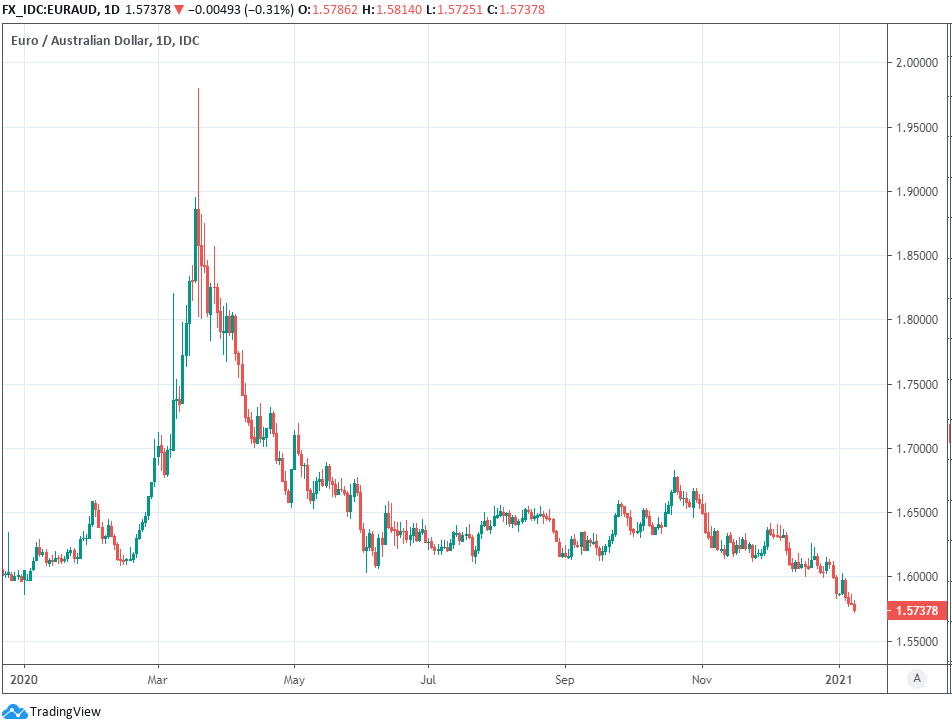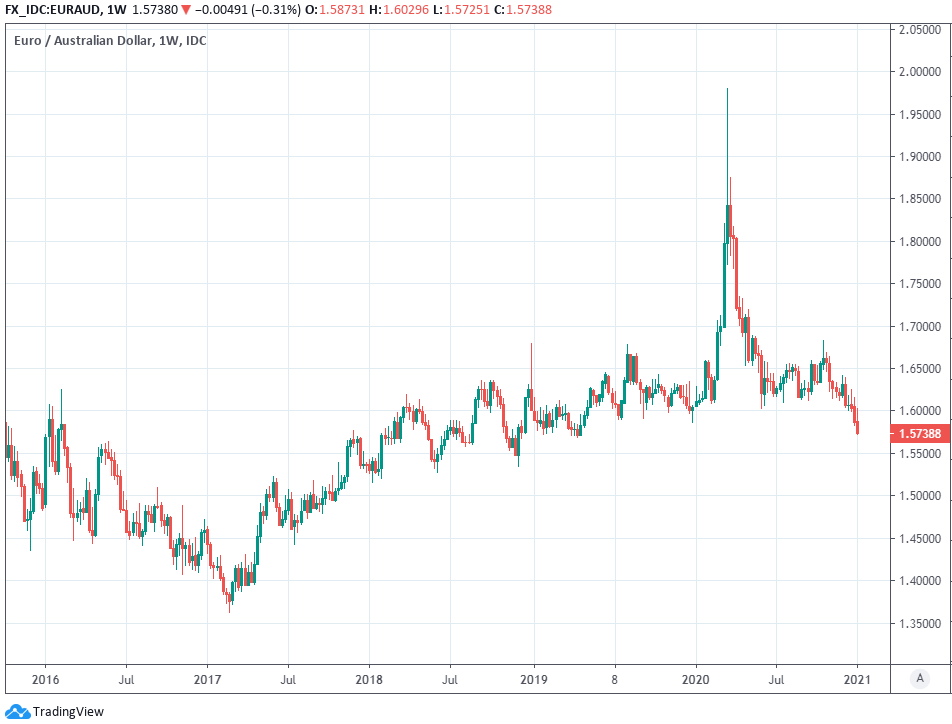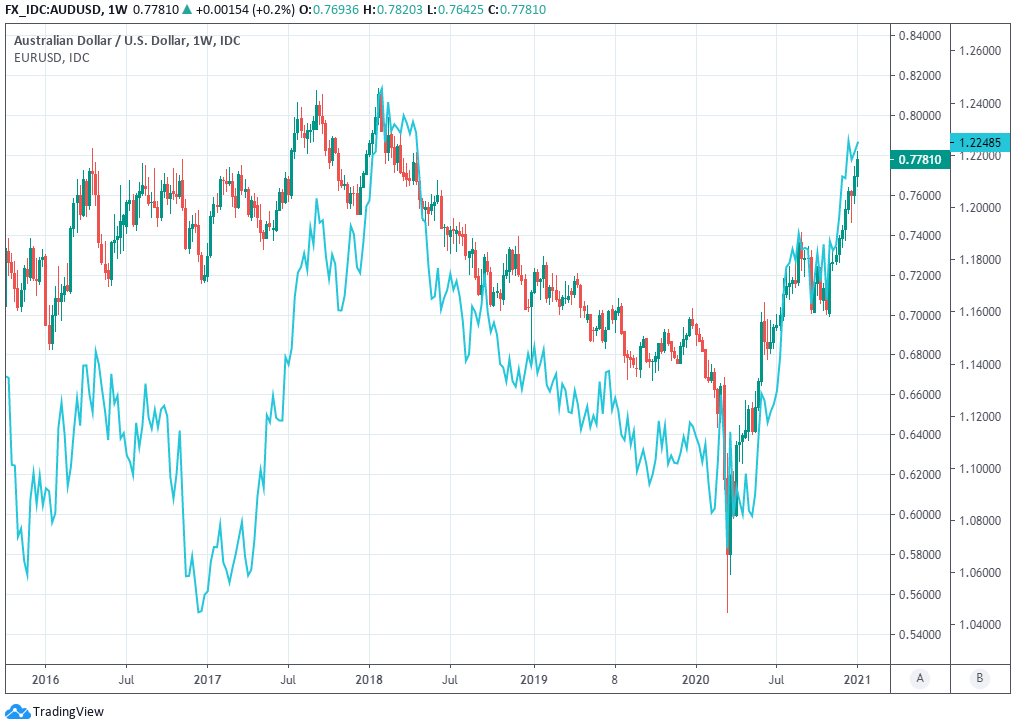Euro-Australian Dollar Rated Sell at CBA with 1.48 Seen in Pipeline
- Written by: James Skinner
- EUR/AUD rated sell as CBA targets 2017's 1.48 level.
- AUD, commodities benefit from U.S. spending outlook.
- Sales of EU, JPY surplus FX powers rally & aids USD.

Image © Adobe Stock
- GBP/AUD spot rate at time of publication: 1.7469
- Bank transfer rate (indicative guide): 1.6858-1.6980
- FX specialist providers (indicative guide): 1.7207-1.7347
- More information on FX specialist rates here
The Australian Dollar remained the second best performing major currency of 2021 on Friday but gains relative to the Euro have been less remarkable than against the Japanese Yen and Commonwealth Bank of Australia (CBA) is now wagering on a catch-up that would push EUR/AUD to its lowest since 2017.
Australian Dollars have been bought widely thus far in the New Year, continuing a trend that was already evident in 2020 and one which is widely expected to endure for the foreseeable future, although it's the Euro-to-Australian Dollar rate that could offer the most downside to the speculatively minded.
The Euro was, just like the Aussie, among the foremost beneficiaries of last year's U.S. Dollar decline. That benefited EUR/USD by virtue of its large weighting in, and negative correlation with the U.S. Dollar Index, and in almost exactly the same way as the greenback's negative relationship with commodity prices helped lift AUD/USD.
But divergence now looms over the path ahead for those two currencies, according to strategists at CBA, and due in no small part to U.S. politics that saw the Democratic Party capture both houses of Congress this week ahead of January 20's inauguration of President Elect Joe Biden.
"The implication is fiscal stimulus in the US is about to get cranked‑up," says Elias Haddad, a senior FX strategist at CBA. "Biden’s proposed agenda is to increase spending on child care and education, health care, retirement, disability benefits, infrastructure, research, and climate change, while lowering the costs of prescription drugs, raising the minimum wage and increasing taxes on high‑income households and corporations. The effect on USD is mixed from a balance of a payments and fiscal/monetary policy perspectives."

Above: Euro-to-Australian Dollar rate shown at daily intervals.
A stronger inclination to spend in the White House and Congress could mean upside risks to the U.S. economic outlook in at least the short-term, at just the same time as the incoming administration prepares to throw a regulatory curveball at corporate profit margins which could eventually ask uncomfortable questions of U.S. stock markets.
There's still much uncertainty about exactly what this will mean for U.S. stocks relative to the peers as well as for exchange rates, although one likely implication of using debt markets to ramp up infrastructure investment and other forms of spending is a possible rise in some U.S. exchange rates.
{wbamp-hide start} {wbamp-hide end}{wbamp-show start}{wbamp-show end}
The greenback would be likely to advance against current-account-surplus-currencies, especially those of economies which are net foreign investors in those kinds of things if the U.S. was to raise large sums on global debt markets in order to finance an economic recovery that's aided by productive investments.
In other words, it's likely the Euro will fare less well against the greenback than many other currencies. Similar is true of the Yen, which could fall against the Dollar and in the process lift USD/JPY even if recent developments in Washington are still bearish for the U.S. Dollar relative to many others including the commodity-sensitive Aussie Dollar.
This would have significant implications for exchange rates like EUR/AUD and AUD/JPY, given those are effectively amalgamations which always closely reflect relative price action in EUR/USD compared with AUD/USD, and USD/JPY contrasted with AUD/USD.

Above: Euro-to-Australian Dollar rate shown at weekly intervals.
Divergence between EUR/USD and AUD/USD is a reliable recipe for a sharp move lower in EUR/AUD and likewise with convergence between USD/JPY and AUD/USD as it relates to AUD/JPY.
"Sustained traction in US economic activity would bode well for USD versus EUR and JPY," Haddad says. "Greater US fiscal support and the start of Covid‑19 immunization campaigns in several countries is positive for the global growth outlook. Importantly, we doubt policymakers in advanced economies will prematurely withdraw policy support because the level of GDP in advanced economies is projected to remain below 2019 levels at least until 2022. The implication is the global economy is entering the “sweet spot” of a cycle where growth prospects are more favourable and inflation remains subdued. Commodity sensitive currencies are poised to benefit in this environment."
Haddad and the CBA team have forecast a 2021 finish at 0.78 for AUD/USD, a level it had more or less reached by Friday.
The Euro-to-Australian Dollar rate would fall alongside EUR/USD if the market is able to sustain current levels of AUD/USD through the year.
CBA is targeting a move down to 1.48 in the months ahead after having advocated on Friday that clients sell the EUR/AUD rate around 1.5780.

Above: AUD/USD shown at weekly intervals alongside EUR/USD (blue).




